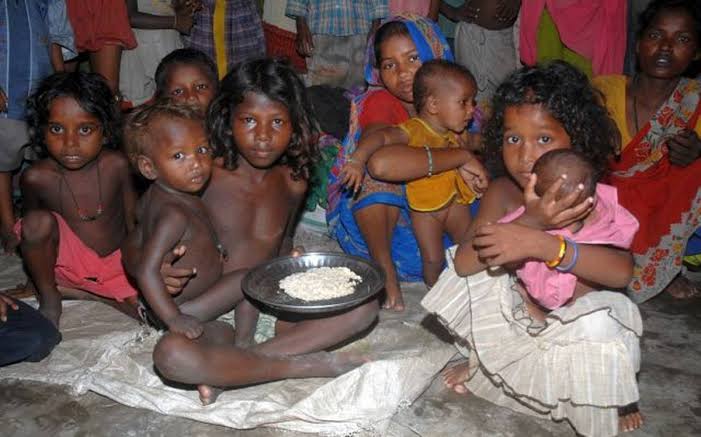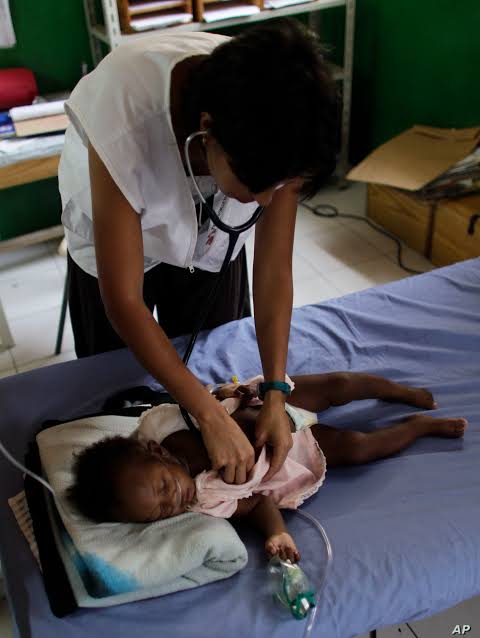
India was at the heart of a global forum in faraway Spain which discussed the looming dangers of pneumonia
The first ever global forum on childhood pneumonia didn’t trigger breaking headlines in India — the world’s most crowded market for news — even though the findings were very, very alarming.
The forum, which recently met in Barcelona, said an estimated nine million children could die in a decade unless world acts on pneumonia, driven by malnutrition, air pollution and lack of access to vaccines and antibiotics. In 2019, pneumonia killed a child every 39 seconds. The task to counter pneumonia is enormous, efforts need to be made across the world to avert such deaths, claimed speakers at the conference.
And India, sadly, is at the heart of it.
Reports say child deaths from pneumonia are concentrated in the world’s poorest countries and it is the most deprived and marginalised children who suffer the most. Forecasts say an estimated 6.3 million children under the age of five could die from pneumonia between 2020 and 2030, deaths are deaths are likely to be highest in Nigeria (1.4 million), India (880,000), the Democratic Republic of Congo (350,000) and Ethiopia (280,000).
So what is the answer?
Vaccines — historically — have been one of the greatest public health tools to prevent disease. Helped by new technology and advancements in genomics, researchers work with improved global coordination. Yet, development of vaccine remains risky and expensive. The time taken is immense, it takes years because the vaccines undergo extensive testing in animals and humans. And then, it becomes available to the public. And then one has to wait and see if such vaccines work on a mass scale. If they don’t, it’s a failure despite undergoing so many tests. If they succeed, it is a boon for the world. “They may not help in the very early stages of an outbreak, but if we’re able to develop vaccines in time, they will be an asset later,” Richard Hatchett, the chief executive of the epidemic preparedness coalition, was quoted by the New York Times.

Consider the case of China. It was in early January, Beijing reported cases of a strange, pneumonia-like illness. Interestingly, researchers at the National Institutes of Health (NIH) in Maryland readied themselves for a vaccine to prevent the new disease. What is significant is the fact that the scientists had amply clues that a coronavirus, almost similar to ones that caused the 2003 SARS outbreak and 2012 MERS, was the culprit. It was widely reported how, Dr. Barney Graham, deputy director of the Vaccine Research Center at the NIH, urged Chinese scientists to share the genetic makeup of the virus. The Chinese scientists posted the information on January 10, 2020, and Dr. Graham’s team within hours had pinpointed the letters of the genetic code that could be used to make a vaccine. Speedy coordination across the world is a must to counter epidemics, scientists have repeatedly warned.
Now, a modelling by Johns Hopkins University says scaling up pneumonia treatment and prevention services can save the lives of 3.2 million children under the age of five. It would also create ‘a ripple effect’ that would prevent 5.7 million extra child deaths from other major childhood diseases at the same time, underscoring the need for integrated health services. Other causes of pneumonia deaths include malnutrition, and lack of access to vaccines and antibiotics. Of the total 8.9 million deaths from all causes that could be averted over the next decade, 3.9 million would be the result of greater efforts to reduce levels of malnutrition alone, said the study.
Pneumonia is caused by bacteria, viruses or fungi, and leaves children fighting for breath as their lungs fill with pus and fluid. It is the biggest single killer of children across the world. Although pneumonia can be prevented with vaccines and is easily treated with $1 antibiotics if properly diagnosed, tens of millions of children are still un-vaccinated – and one in three children with symptoms do not receive essential medical care.

But key measures like timely health interventions aimed at improving nutrition, providing antibiotics and increasing vaccine coverage, boosting breastfeeding rates could reduce the risk of children dying from pneumonia and prevent millions of child deaths from diseases like diarrhoea (2.1 million), sepsis (1.3 million), and measles (280,000).
Kevin Watkins, Chief Executive of Save the Children, raised a very important point: “The number of lives that could be saved is potentially far higher as the modelling did not take into account factors like availability of medical oxygen, or action to reduce levels of air pollution, a major risk factor for pneumonia. These results show what is possible. It would be morally indefensible to stand and allow millions of children continue to die for want of vaccines, affordable antibiotics and routine oxygen treatment.”
Agreed Henrietta Fore, Executive Director of UNICEF: “If we are serious about saving the lives of children, we have to get serious about fighting pneumonia. As the current coronavirus outbreak shows, this means improving timely detection and prevention. It means making the right diagnosis and prescribing the right treatment. It also means addressing the major causes of pneumonia deaths like malnutrition, lack of access to vaccines and antibiotics, and tackling the more difficult challenge of air pollution.”
The Institute for Health Metrics and Evaluation says outdoor air pollution contributes to 17.5 per cent – or nearly one in five – pneumonia deaths among children under five worldwide. Household pollution from the indoor use of solid cooking fuels contributes to an additional 195,000 (29.4 per cent) deaths.
But this can be checked, and the deaths prevented, says Dr Seth Berkley, CEO of Gavi, the Vaccine Alliance: “Pneumococcal pneumonia is an easily preventable, often treatable disease – no parent should go through the agony of losing their child to this disease. Over the past decade we have made progress in boosting the number of children receiving lifesaving pneumococcal vaccine and it is vital that we keep up these efforts to protect the next generation against this deadly disease.”
She found instant support from Quique Bassat, Research Professor at the Barcelona Institute for Global Health (ISGlobal) and Chair of the Global Forum on Childhood Pneumonia. “The disease that kills most children in the world cannot be neglected any longer in terms of its scarce global research funding.”
Said Leith Greenslade, Co-ordinator of the Every Breath Counts Coalition: “Governments and international development agencies must act urgently to protect the most vulnerable children from malnutrition and exposure to air pollution, and ensure that they receive pneumonia-fighting vaccines and speedy diagnosis, child-friendly antibiotics and oxygen if they become sick. If they don’t, 9 million children’s lives are at stake.”
And let’s remember that 91 percent of the world population is breathing outdoor air that exceeds WHO standards. The scale of the air pollution challenge could potentially undermine the impact of scaling up pneumonia-related interventions.
The world is getting together to prevent child deaths from pneumonia. As many as nine leading health and children’s organisations – ISGlobal, Save the Children, UNICEF, Every Breath Counts, “la Caixa” Foundation, the Bill & Melinda Gates Foundation, USAID,Unitaid and Gavi, the Vaccine Alliance – are getting together to create a bandwagon of help. Among many things, the group will soon announce a more affordable, PCV vaccine from the Serum Institute of India and ensure commitments from governments in high-burden countries to develop national strategies to reduce pneumonia deaths.
The Group of Nine knows with each new outbreak, scientists typically have to start from scratch. Researchers took almost two years to develop a vaccine for human trials after the 2003 SARS outbreak in 2003. And by the time an epidemic caused by the Zika virus occurred in 2015, researchers had reduced the timeline to six months. This time, they hope the joint efforts will cut that time in half if they use the SARS vaccine template and swap it with enough genetic codes. Many are calling it Plug & Play. And it is working, which is good news for the researchers. And the world. Nations with high-risk need to pitch in more, they need to be brave and they must know there is no financial incentive in doing this, except it will be a great service to mankind.
Will India take the lead, and join hands with some of the world’s finest scientists and researchers?
